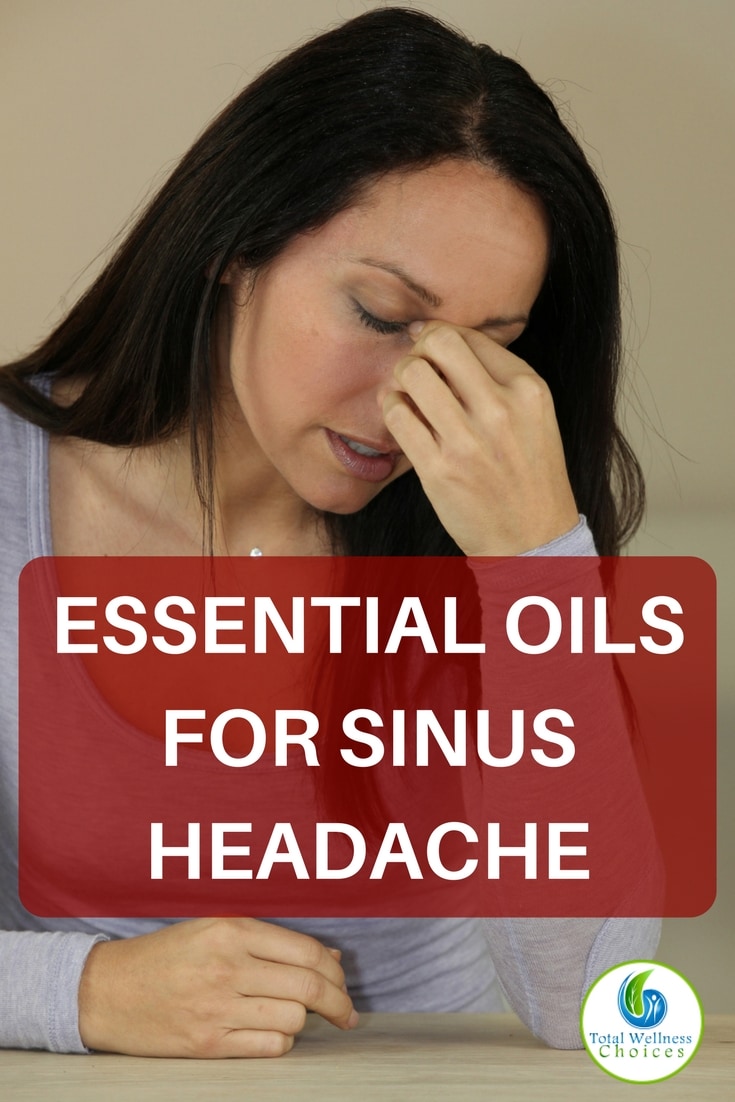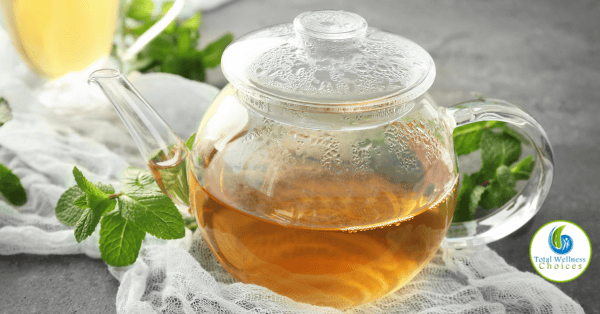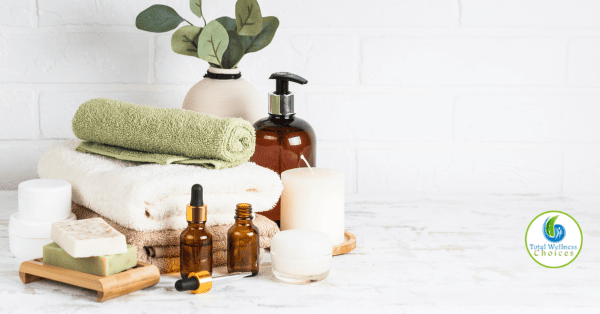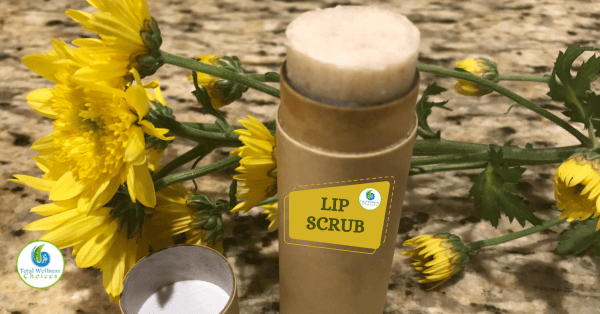Top 4 Essential Oils for Sinus Headache Relief

9 Amazing Lavender Essential Oil Benefits and Uses
June 8, 2017
Top 5 Essential Oils for Fever Blisters (Cold Sores)!
June 15, 2017Discover the Best Essential Oils for Sinus Headache Relief that can Help Alleviate Your Pains!
Using essential oils for sinus headache is one of the best natural ways to combat this health issue.
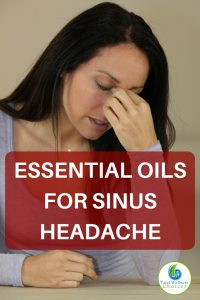 Headaches affect millions of people worldwide. Their causality is myriad. In fact, many people don’t have any idea why they are enduring these painful maladies.
Headaches affect millions of people worldwide. Their causality is myriad. In fact, many people don’t have any idea why they are enduring these painful maladies.
Stress, allergies, fatigue, low blood sugar, caffeine withdrawal, poor posture, and even constipation, are well known contributors.
Of course, some people are experiencing these headaches as a combination of elements.
Suffering from frequent headaches is certainly a pain. Even though I personally don’t have sinus headaches, I do certainly have headaches and they are NOT pleasant!
Moreover, I have friends that do have sinus and I know the type of pain they go through whenever they have attacks.
The good news is, there are a lot of natural remedies available to help alleviate the issue. However, essential oils are my personal favorites.
Using Essential Oils for Sinus Headache
For most people, pain relievers are their go-to when headaches accost them. However, there’s been an increasing realization that these are not the best options. In fact, essential oils are a safer alternative.
They alleviate the real cause of the headaches by improving circulation, relieving stress, strengthening the immune system, and offering pain relief.
This assist in the protection of your vital organs, something over the counter and prescription pharmaceuticals cannot claim.
Therefore, you should probably utilize one of these essential oils (or try them all to see which works best for you) for the alleviation of your sinus headaches. You can even blend two or three oils together for better results
Safety When Using Essential Oils
Always, do a skin patch test prior to topically using an essential oil you have never used before! See my sections on essential oil safety:
- 8 Essential Oil Dangers and Risks
- How to Dilute Essential Oils for Topical Use
- Essential Oils that are Safe for Kids
- Essential Oils to Use During Pregnancy
#1. Lavender Essential Oil for Sinus Headache
Radha Beauty Lavender Essential Oil 4 Oz – 100% Pure & Natural Therapeutic Grade People are very aware of lavender’s ability to relieve various ailments.
People are very aware of lavender’s ability to relieve various ailments.
It can alleviate tension and stress, act as a sedative for better sleep or antidepressant, and is anxiolytic.
The linalool and linalyl acetate found in lavender penetrate the skin and have a relaxing effect on the nervous system.
This allows lavender to eliminate the stress and anxiety frequently associated with the onset of headaches.
In fact, a recent study revealed that lavender oil safely and effectively alleviated migraines in the participants studied.
Diffusing 5 drops can offer great stress and tension relief.
However, you can also apply it to wrists, temples, and the back of the neck or use 10 drops (diluted with carrier oil) in a warm bath.
#2. Eucalyptus Oil for Sinus Headache
NOW Eucalyptus Oil, 4-Ounce The removal of harmful toxins and the opening up of blocked nasal passages are both associated with eucalyptus’ headache fighting powers.
The removal of harmful toxins and the opening up of blocked nasal passages are both associated with eucalyptus’ headache fighting powers.
Inhaling eucalyptus alleviates pain and stabilizes blood pressure.
It has also been shown to aid in emotional well-being, minimize inflammation, and reduce the potential for the formation of edema.
Eucalyptus can also minimize runny noses and clear lungs.
Plus, it acts as an antimicrobial, antibacterial, and antiviral treatment.
This helps alleviate pressure build-ups associated with sinus headaches and other respiratory ailments.
Mix 4 drops of it with a carrier oil. Then apply to the temple, chest, back of the neck, and forehead.
Care must be taken when using Eucalyptus essential oil in asthmatics and children under age 10.
#3. Peppermint Oil is Good for Headaches
Peppermint has cooling and calming properties. Plus, it can slow down muscle contractions, which are known to intensify headaches.
Applying peppermint oil to the temple and forehead also helps to boost blood circulation to those areas. This helps to alleviate the consistent pain and feelings of fullness associated with sinus headaches.
Studies show that using peppermint oil when experiencing a headache can help lessen the pain.
Mixing peppermint oil with ethanol, and eucalyptus oil is particularly beneficial and might even reduce sensitivity to light and noise frequently associated with headaches.
Add 3 drops of peppermint oil to fractionated coconut oil.
Then apply to your forehead and shoulders to boost circulation, alleviate tension, and decrease pain.
Peppermint should not be used in children under five. Important to keep away from a young child’s face as it can be neurotoxic.
Also if you have cardiac fibrillation, or a G6PD deficiency Peppermint essential oil is not recommended for you!
#4. Rosemary Essential Oil for Headaches
NOW – Rosemary Oil, 1-Ounce Like the other essential oils on this list, rosemary is known for its calming properties as well as its anti-inflammatory nature.
Like the other essential oils on this list, rosemary is known for its calming properties as well as its anti-inflammatory nature.
It can minimize the anxiety and stress that often trigger the onset of headaches.
And can also be useful in fighting the stomach upsets that result.
Add 2 drops of rosemary to some coconut oil with 2 drops of peppermint.
And then massage the mixture into your temple, forehead, and neck to alleviate the pain caused by headaches.
Rosemary should not be used around or to the face of children under 5 years old. Also, it is recommended to use with caution for children between 5-10 years old.
Salt Bath Essential Oil Recipe for Sinus Congestion
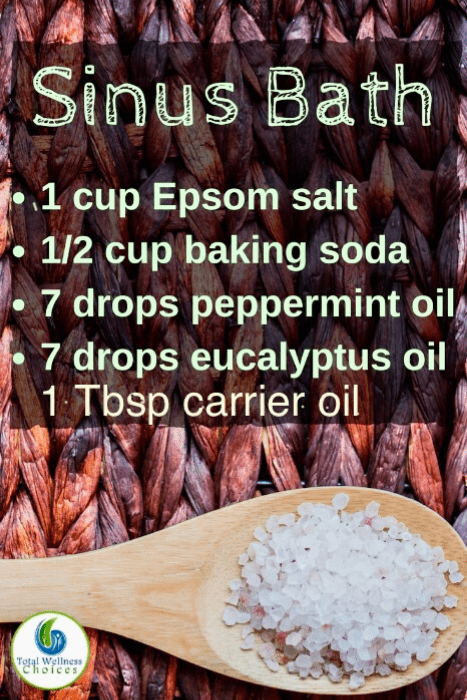
- 1 cup Epsom salt
- 1/2 cup baking soda
- 1 Tablespoon fractionated coconut oil, or jojoba oil
- 7 drops peppermint EO, or rosemary EO
- 7 drops eucalyptus EO
To use, add 1/4-1/3 cup of the Sinus Bath salt blend in warm bath and soak for about 30 minutes.
Remember to take care getting out of the bathtub as it can be slippery. Clean the tub well afterwards to prevent you, or another family member from falling!
This recipe used as directed uses only around 2 drops of peppermint EO per bath. Some people find they are unable to use peppermint in bath water as it can be irritating to the skin.
You can substitute Rosemary essential oil, or decrease the amount of peppermint you add to the bath water. This is an adult only recipe.
The following is an alternative to use in the shower. As it is away from the skin it provides a steam inhalation effect only.
Shower Steam Essential Oil Recipe for Sinus Congestion
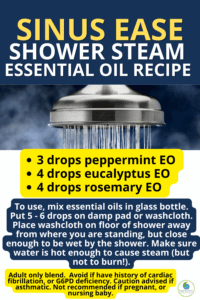
- 3 drops peppermint oil
- 4 drops eucalyptus oil
- 4 drops rosemary oil
To use, mix essential oils in glass bottle. Place 5 to 6 drops on damp pad or washcloth. Place washcloth on floor of shower away from where you are standing, but close enough to be wet by the shower. Make sure water is hot enough to cause steam (but not to burn!).
Related Read: How to Make Headache Balm at Home
Symptoms of Sinus Headache
Know that sinus headaches are the result of an accumulation of sinus pressure. Infections and allergic reactions cause these small air-filled spaces inside your forehead and cheekbones (sinuses) to become inflamed.
Mucus build-up and blockages ensue. That pressurizes the area and causes the resulting pain.
Some of the common symptoms of sinus headache include:
- Headache is accompanied by facial swelling, fever and runny nose. And the feeling that the areas around your ears are full
- When you strain, or shift your head, the pain is more intense
- There’s a consistent, deep pain in your cheekbones, forehead, and behind your nose bridge
Frequent sinus headache attacks are a horrid problem. And, since pharmaceuticals often don’t provide the sought-after relief, I suggest using the essential oils discussed here.
There’s plenty of research to show that essential oils do not just relieve the pain associated with headaches. But they also are able to treat the underlying causalities.
Remember you should consult your doctor before using essential oils if you are pregnant or nursing a baby!

These statements have not been evaluated by the Food and Drug Administration. This article is for educational and informational purposes only and does not intend to diagnose, treat, cure, or prevent any disease or health condition. It is always recommended that you seek the advise of your private medical doctor.





